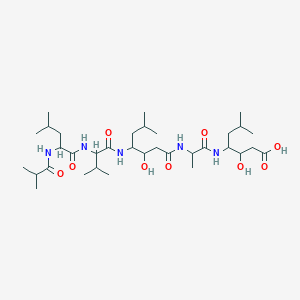|
Name: Pinazepam
Type: Benzodiazepine
AKA: Domar

|
|
II. Natural Derivative
Synthetic substance, no natural derivative
 |
|
III. Chemical Profile (IUPAC name)

|
|
IV. History
Pinazepam, a benzodiazepine, was developed in the 1970s. It is used for its anxiolytic and sedative effects and is studied for its potential therapeutic uses in treating anxiety and related disorders.

|
|
V. Legal Information
Pinazepam, a benzodiazepine, is classified as a Schedule IV controlled substance in the US, allowing limited medical use. It is similarly regulated in many countries due to its potential for abuse and dependency. The UNODC emphasizes the need for balanced regulation to ensure safe medical use while preventing misuse. Trends indicate ongoing control measures to monitor and regulate benzodiazepines.
US Federal Schedule - IV
Schedule IV drugs, substances, or chemicals are defined as drugs with a low potential for abuse and low risk of dependence. Some examples of Schedule IV drugs are: Xanax, Soma, Darvon, Darvocet, Valium, Ativan, Talwin, Ambien, Tramadol.
Key US Federal Policies:
Controlled Substances Act. Public Law: Public Law 91-513 (text can be found on GovInfo) (https://www.dea.gov/drug-information/csa). Date enacted: October 27, 1970.
|
|
VI. Physical Effects
Pinazepam is a benzodiazepine used as an anxiolytic and sedative. It acts as a downer, causing sedation and reduced anxiety. Short-term use is effective for anxiety management, but long-term use may lead to dependence and cognitive impairment. Overdose risks include severe sedation and respiratory depression. Safe use involves precise dosing and medical supervision. Recent research examines its efficacy and associated risks.  |
|
VII. Psychological Effects
Pinazepam, a benzodiazepine, affects GABA-A receptors, leading to anxiolytic and sedative effects. Immediate effects include reduced anxiety and improved mood, lasting several hours. Long-term use may result in cognitive impairments and dependence. Research highlights its impact on neurotransmitter systems and the psychological risks associated with chronic benzodiazepine use, including cognitive decline and dependence.
 |
|
VIII. Culture
Pinazepam is a benzodiazepine with anxiolytic and sedative properties, classifying it as a downer. Short-term use reduces anxiety and induces sleep, while long-term use can lead to dependence and withdrawal symptoms. Overdose risks include severe respiratory depression and potentially fatal outcomes. Safe dosages are medically prescribed, typically under 30 mg per day. Recent research highlights its efficacy in anxiety and insomnia management but warns of addiction risks. Physical effects include drowsiness, dizziness, and impaired coordination.
 |
